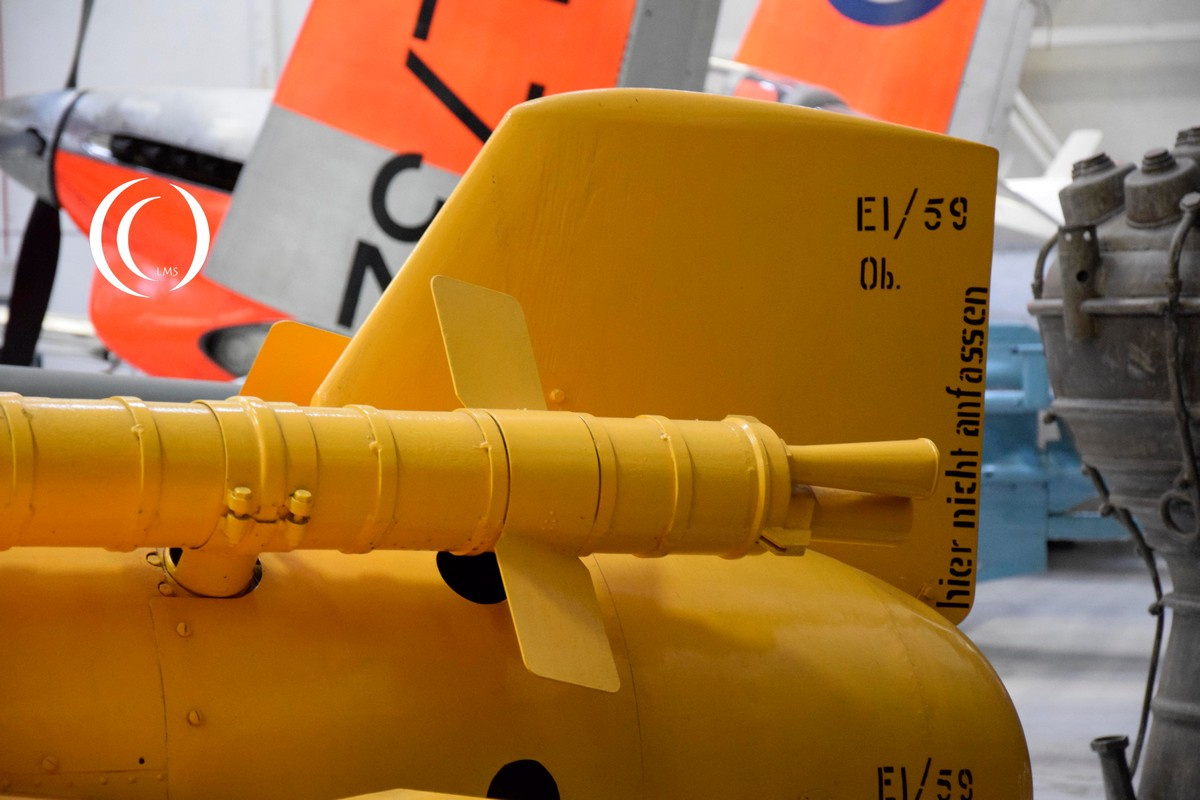The German surface to air rocket Enzian was a German anti-aircraft missile developed during World War Two. It is named after the Enzian (Gentiana) flower. The rocket’s design is based on the Messerschmitt Me 163. The Me 163 rocket powered airplane had only a limited amount of flying time after its ascent to 9000 meters high with staggering speed. And it lacked a suitable weapon when diving into its target flying 640 km/h. Dr. Herman Wurster of the Messerschmitt company suggested a FlaK Rakete 1 FR-1 (FLaK – Fliegerabwehrkanone). This anti-aircraft rocket would fly just in front of a bomber squadron or fighter airplane and detonate 500 kg of explosives in the hope of bringing down one or more aircraft at once without the loss of a Luftwaffe pilot.



Specifications
The Enzian was propelled by 4 Schmidding 109-553s solid fuel boosters from take-off and a Walther rocket engine in the first versions of the missile. The Schmidding boosters, with a total of 7000 kg of thrust, reduced the amount of fuel needed for take-off by the main engine. While the Walther rocket motor kept lagging, Dr. Konrad was asked for help. Konrad developed the engine for the Rheintochter Anti-Aircraft missile and a modified version was used in the production version of the Enzian missile.
The shape of the Enzian resembles the Messerschmitt Me 163 in fuselage and has the same swept wings. It was 4 meters long and 4 meters wide, fully loaded, it weighted 1800 kg with a 500 kg warhead. It could reach a height of 16 km and a distance of 25km with a speed of 300 m/s (1080 km/h). It was launched from an adjusted 88 mm gun mount.





A missile of wood
The Enzian was manufactured by Holzbau Sonthofen and made of wood. Holzbau Sonthofen built over 60 of the Enzian missiles. Versions E-1 to E-3 were prototypes and the E-4 version was the production model. Its first flight was in August 1944, but on 17 January 1945 all tests were cancelled by the Luftwaffe. All efforts would be concentrated on the development and construction of the Messerschmitt Me 262 Schwalbe Jet-Fighter aircraft and the Heinkel 162 Salamander Jet-Fighter aircraft.



The Enzian missile came in different versions. There was the one with a 500 kg warhead, which had a blast area of about 45 meters. There was an Enzian filled with shrapnel, this reached a distance of 65 meters and the last known is a version with multiple warheads. This Enzian missile contained 500 tiny black powder missiles – each with a range of 300 meters, very much like a cluster bomb. The Enzian could also be used as an Air to Air missile.
Only two Enzian missiles survive today, one in Australia and one in the United Kingdom. This Enzian Missile was photographed in the Royal Air Force Museum Cosford in the United kingdom.
